With the end of World War II, the Allies and the Soviet Bloc found themselves locked in a state of anatgonism. As they poured over the remains of the Nazi war machine, they discovered incredible advances in rocketry and aerospace engineering, and began scrambling to procure all they could.
For many of the many decades that followed, this state would continue as both sides struggled to make advancements in the field of space exploration ahead of the other. This was what is popularly known as the “Space Age”, an era that was born of the advent of nuclear power, advances in rocketry, and the desire to be the first to put men into space and on the Moon.
This era would come to be defined by rapid advances in technology, and a number of historic firsts being accomplished before winding down and giving way to an era of cooperation.
Beginnings
The Space Age is thought to have officially begun on October 4th, 1957, with the launch of Sputnik 1 by the Soviet Union – the first artificial satellite to be launched into orbit. News of the launch triggered a great deal of fear in the United States, as many worried that Sputnik could represent a threat to national security, not to mention America’s technological leadership.
As a result, Congress urged then-President Dwight D. Eisenhower to take immediate action, which resulted in the signing of the National Aeronautics and Space Act on July 29th, 1958, officially establishing NASA. Immediately, NASA became dedicated to researching hypersonic flight and taking the necessary steps towards creating manned spacecraft.
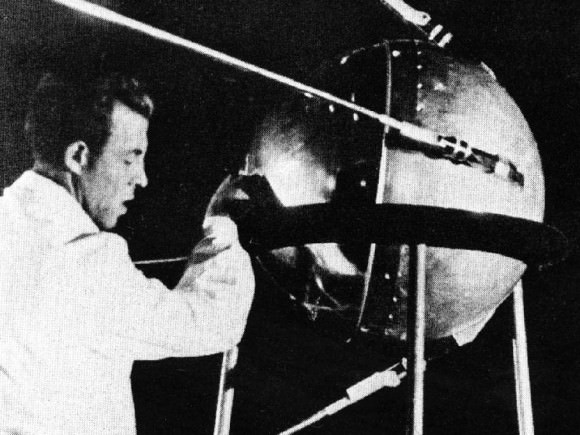
Vostok and Mercury
After Sputnik, the Soviets and United States began to work on developing the necessary spacecraft to send humans into orbit. This began in January of 1959 in both Russia and the US with the Vostok and Mercury programs.
In the case of Vostok, this consisted of developing a space capsule that could be launched aboard an expendable carrier rocket. Along with numerous unmanned tests, and a few using dogs, six Soviet pilots were selected by 1960 to be the first men to go into space. Known as The Vanguard Six, this group consisted of Yuri Gagarin, Valery Bykovsky, Grigori Nelyubov, Andrian Nikolayev, Pavel Popovich, and Gherman Titov.
On April 12th, 1961, Gagarin was launched aboard the Vostok 1 spacecraft from the Baikonur Cosmodrome, and thus became the fist man to go into space (beating American Alan Shepard by just a few weeks). On June 16th, 1963, Valentina Tereshkova was sent into orbit aboard the Vostok 6 craft (which was the final Vostok mission), and thus became the first woman to go into space.
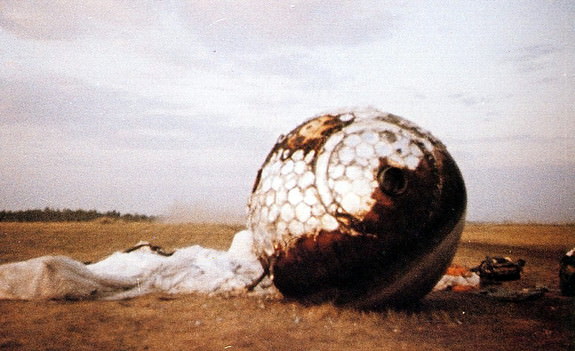
Meanwhile, NASA began work on Project Mercury, a program taken over from the US Air Force which ran from 1959 until 1963. Designed to send a man into space using existing rockets, the program quickly adopted the concept of launching ballistic capsules into orbit. The first seven astronauts, nicknamed the “Mercury Seven“, were selected from from the Navy, Air Force and Marine test pilot programs.
On May 5th, 1961, astronaut Alan Shepard became the first American in space aboard the Freedom 7 mission. Then, on February 20th, 1962, astronaut John Glenn became the first American to be launched into orbit by an Atlas launch vehicle as part of Friendship 7. Glenn completed three orbits of planet Earth, and three more orbital flights were made, culminating in L. Gordon Cooper’s 22-orbit flight aboard Faith 7, which flew on May 15th and 16th, 1963.
Having put an artificial satellite and the first man and woman into space, the Soviets maintained their edge during the early years of the Space Age (late 50s and early 60s). After Vostok and Mercury programs were completed, the focus of both nations and space programs shifted towards the development of two and three-man spacecraft, as well as the development of long-duration spaceflights and extra-vehicular activity (EVA).
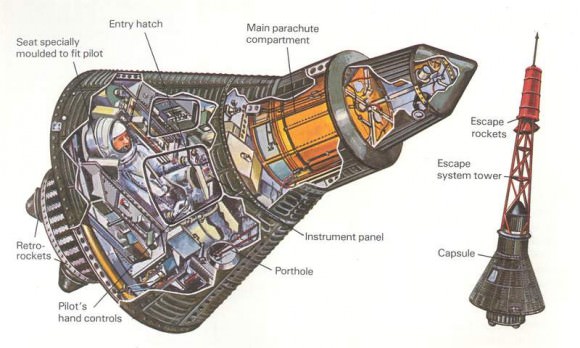
Voskhod and Gemini
After having tested their first-generation Vostok and Mercury capsules and demonstrated the technical feasibility of manned spaceflight, both NASA and the Soviet space program proceeded to build their second-generation spacecraft. For NASA, this involved the development of the Gemini capsule, a two-person spacecraft that was a completely new design over the Mercury capsule.
While the new design retained the conical, nickel-alloy walls and fiberglass ablative heat shield of Mercury, it also made use of new features – such as translations control thrusters to alter orbit, hydrogen/oxygen fuel cells to generate electricity, a radar system to allow rendezvous with other craft, and avionics that could withstand depressurization (thus facilitating EVAs).
Project Gemini ran from 1961 to 1966. The first flight (Gemini 3) went up on March 23rd, 1965, with astronauts Gus Grissom and John Young aboard. Nine missions followed in 1965 and 1966, with spaceflights lasting for nearly fourteen days at a time.
During these missions, crews conducted docking and rendezvous operations, EVAs, and gathered medical data on the effects of weightlessness on humans. These operations and the new features aboard the Gemini spacecraft were intended to develop support for Project Apollo (which also began in 1961).
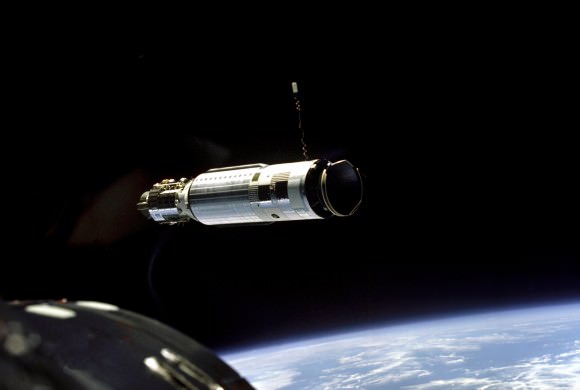
In comparison, the Soviet Voskhod capsules were simply modified Vostok craft, with no provisions made for translation control, rendezvous or docking. However, like the Gemini capsule, the new Voskhod design allowed for a crew of two to three and permitted EVAs. In the end, the Voskhod program was abandoned after only two manned missions – which took place in 1964 and 1965 – and was replaced by the more advanced Soyuz spacecraft.
Soyuz and Apollo
In the early 60s, both the Russian and American space programs began to contemplate sending astronauts to the Moon. For NASA, this began in 1961 with the launch of the Apollo program and culminated in 1972 with multiple manned missions reaching the Moon.
The program relied on the use of Saturn rockets as launch vehicles and a spacecraft that consisted of a command and service module (CSM) and a lunar landing module (LM). The project began with a terrible tragedy when on January 27th, 1967, the Apollo 1 craft experienced an electrical fire during a test run, destroying the capsule and killing the crew of three (Virgil I. “Gus” Grissom, Edward H. White II, Roger B. Chaffee).
The second manned mission, Apollo 8, brought astronauts for the first time in a flight around the Moon in December of 1968. On the next two missions, docking maneuvers that were needed for the Moon landing were practiced. And finally, the long-awaited Moon landing was made with the Apollo 11 mission on July 20th, 1969, where astronauts Neil Armstrong and Buzz Aldrin became the first men to walk on the Moon.
Five subsequent Apollo missions also landed astronauts on the Moon, the last in December 1972. Throughout these six Apollo spaceflights, a total of twelve men walked on the Moon. This was considered the height of the Space Age, with the historic achievement of placing astronauts on another celestial body finally being made.
Meanwhile, the Soyuz program called for the development of a three-stage expendable launch rocket and a spacecraft that consisted of three modules (orbital, descent, and an instrumentation and propulsion). In time, many iterations of the Soyuz craft were created, including the Soyuz 7K-L1 (Zond) capsule. Paired with the N1 rocket, this craft was the backbone of the Soviet manned lunar program.
Unfortunately, budget constraints, technical failures and shifting priorities resulted in no manned lunar missions ever being made. As the American space program successfully reached the Moon, Russia began to focus instead on developing expertise in long-duration space flight and in the deployment of a space station.
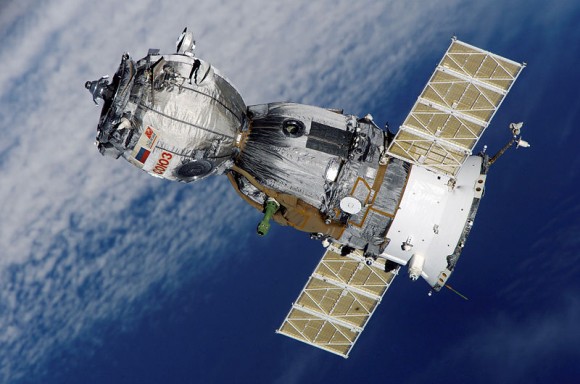
As a result, during the late 1960s and early 1970s, multiple manned missions were made as part of the Soyuz program into Earth’s orbit. These included docking maneuvers made with other craft in orbit, and orbital rendezvous’ with the Salyut 1 station, which was also deployed.
The Space Stations Era
With NASA having made it to the Moon, the pace of competition in the “space race” began to wind down. From this point onwards, both Russia and the US began to shift their focuses to address dwindling budgets and other long-term goals.
For the Russians, this led to the continued development space station technology as part of the Salyut program. Between 1972 and 1991, they attempted to orbit seven separate stations. However, technical failures and a failure in one rocket’s second stage boosters caused the first three attempts to orbit a station after Salyut 1 to fail or result in the station’s orbits decaying after a short period.
However, by 1974, the Russians managed to successfully deploy Salyut 4, followed by three more stations that would remain in orbit for periods of between one and nine years. While all of the Salyuts were presented to the public as non-military scientific laboratories, some of them were actually covers for the military Almaz reconnaissance stations.
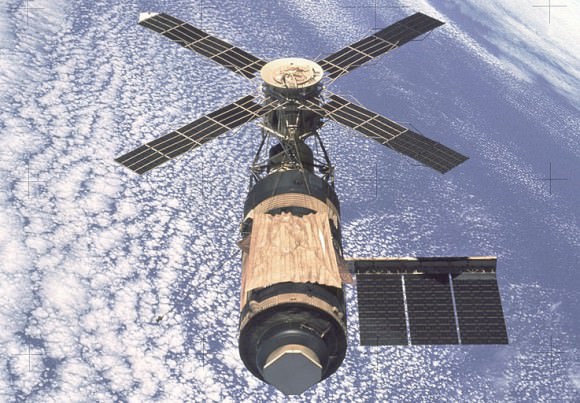
NASA meanwhile pursued the development of space station technology as well. This culminated in May of 1973 with the launch of Skylab, which would remain America’s first and only independently-built space station. During deployment, Skylab suffered severe damage, losing its thermal protection and one of its electricity-generating solar panels.
This necessitated the first crew to rendezvous with the station to conduct repairs. Two more crews followed, and the station was occupied for a total of 171 days during its history of service. This ended in 1979 with the downing of the station over the Indian Ocean and parts of southern Australia.
By 1986, the Soviets once again took the lead in the creation of space stations with the deployment of Mir. Authorized in February 1976 by a government decree, the station was originally intended to be an improved model of the Salyut space stations. In time, it evolved into a station consisting of multiple modules and several ports for crewed Soyuz spacecraft and Progress cargo spaceships.
The core module was launched into orbit on February 19th, 1986; and between 1987 and 1996, all of the other modules would be deployed and attached. During its 15-years of service, Mir was visited by a total of 28 long-duration crews. Through a series of collaborative programs with other nations, the station would also be visited by crews from other Eastern Bloc nations, the European Space Agency (ESA), and NASA.
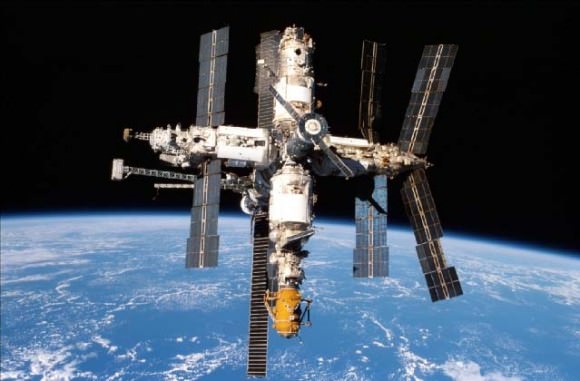
After a series of technical and structural problems caught up with the station, the Russian government announced in 2000 that it would decommission the space station. This began on Jan. 24th, 2001, when a Russian Progress cargo ship docked with the station and pushed it out of orbit. The station then entered the atmosphere and crashed into the South Pacific.
The Space Shuttle Program and ISS
By the early 70s, a changing budget environment forced NASA to begin researching reusable spacecraft, which resulted in the Space Shuttle Program (1983 – 1998). Unlike previous programs, the Space Shuttle was a mostly reusable system, consisting of a spaceplane orbiter with an external fuel tank and two solid-fuel launch rockets at its side.
The external tank, which was bigger than the spacecraft itself, was the only major component that was not reused. Six orbiters were constructed in total, named Space Shuttle Atlantis, Columbia, Challenger, Discovery, Endeavour and Enterprise. Over the course of 15 years and 135 missions, the Space Shuttles performed many important tasks – including the deployment of Spacelab, the Hubble Space Telescope and helping to complete the construction of Mir.
The Shuttle program also suffered two disasters during the course of its 15 years of service. The first was the Challenger disaster in 1986, while the second – the Columbia disaster – took place in 2003. Fourteen astronauts were lost, as well as the two shuttles. By 2011, the program was discontinued, the last mission ending on July 21st, 2011 with the landing of Space Shuttle Atlantis at the Kennedy Space Center.

By 1993, NASA began collaborating with the Russians, the ESA and the Japan Aerospace Exploration Agency (JAXA) to create the International Space Station (ISS). Combining NASA’s Space Station Freedom project with the Soviet/Russian Mir-2 station, the European Columbus station, and the Japanese Kibo laboratory module, the project also built on the Russian-American Shuttle-Mir missions (1995-1998).
With the retirement of the Space Shuttle Program in 2011, crew members have been delivered exclusively by Soyuz spacecraft in recent years. Until another US manned spacecraft is ready – which is NASA is busy developing – crew members will travel to and from the ISS exclusively aboard the Soyuz.
The ISS has been continuously occupied for the past 15 years, having exceeded the previous record held by Mir; and has been visited by astronauts and cosmonauts from 15 different nations. The ISS program is expected to continue until at least 2020, but may be extended until 2028 or possibly longer, depending on the budget environment.
Space Exploration Today
In recent years, the Space Age has once again picked up speed, with interest in space exploration and missions growing. This is in no small part thanks to the Spirit and Opportunity rovers – as well as the more recent Curiosity mission – exploring the Martian surface and discovering clues about the planet’s past. These include the presence of warm, flowing water and organic molecules.
In addition, interest in deep space exploration has been spurred on by the recent explosion in the discoveries of extrasolar planets, largely by the Kepler space probe. Space exploration has also benefited from the advent and use of social media, which has allowed astronauts and space agencies to engage the public and keep them updated on the progress of missions.
A fitting example of this is Chris Hadfield’s collaboration with Ed Robertson of The Barenaked Ladies and the Wexford Gleeks, singing “Is Somebody Singing?“ (I.S.S.) via Skype. The broadcast of this event was a major media and drew attention to the work being done aboard the ISS, as did his rendition of David Bowie’s “Space Oddity“, which he sung shortly before departing the station in May 2013.
In the coming years, NASA hopes to conduct even more ambitious missions, which include bringing an asteroid closer to Earth so we can study it more closely, and sending more rovers, landers, and even astronauts to Mars.
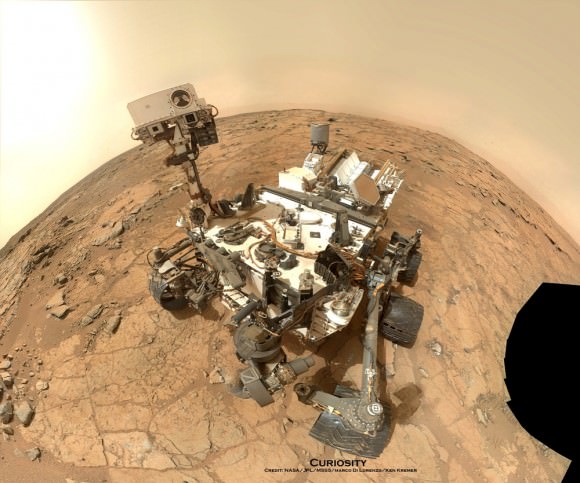
A great deal of effort is also being dedicated towards the creation of new launch vehicles and reusable rockets. In the US, this is being done predominantly by contractors such as Boeing and SpaceX, the latter of which is busy developing its Falcon 9 reusable heavy rocket system. In Russia, these efforts are being directed towards the development of the Angara, a new family of reusable rockets.
The Russian Federal Space Program (Roscosmos) is also deep into planning long-term missions. These include the Luna-Glob lunar exploration program, which calls for the eventual creation of a lunar base. The first proposed mission for this program, Luna-25, is expected to launch sometime in 2018. By 2024, they also hope to send a space probe (Venera-D) to Venus to conduct surveys similar to what the Soviet space program did in the 1980s.
Outside of the traditional superpowers, other federal space agencies are occupying a greater share of the space exploration as well. These include the European Space Agency (ESA), the Japan Aerospace Exploration Agency (JAXA), the Indian Space Research Organization (ISRO), and the China National Space Administration (CNSA).
Missions of note for these agencies include the Rosetta spacecraft, the Gaia Space Probe, the Mars Orbital Mission (MOM), the Chang’e lunar missions, and the Tiangong space station program.
Legacy
What began in the post-war years as a struggle between two superpowers to “get their first” has since evolved into a cooperative venture designed to advance humanity’s understanding of, and presence in, space. Today, multiple federal space agencies work closely with each other and the private sector in the pursuit of these goals.
Nevertheless, none of this would be possible were it not for the period that began with the launch of Sputnik in 1957 and peaked with the Moon Landing in 1969. The competition, high levels of investment, and fears that characterized this period ultimately led to scientific breakthroughs and the development of technologies that would have a drastic impact on many areas of life, the global economy, and ensure humanity’s future in space.
Today, over a thousand artificial satellites orbit Earth, relaying communications data around the planet and facilitating remote sensing data that helps us to monitor weather, vegetation, and the movements of human beings around the globe. In addition, the invention of microchips and modern computing, which in turn drives so much of everyday activities, owe their existence largely to research initially driven by the desire to explore space.
And in the coming years, who knows what advances in space exploration will yield? Perhaps climatological research on planets like Mars and Venus will help us to develop geo-engineering techniques to fight Climate Change here on Earth. The creation of orbital facilities and aerospace planes could also lead to a fully-fledged space tourism industry. And prospecting on the Moon, Mars, and on asteroids could expand our economy greatly and teach us much about the history of the Solar System.
But above all, ongoing space exploration, the hallmark of the “Space Age”, is likely to transform humanity from a terrestrial race into an interplanetary (or even interstellar) one!
Universe Today also has articles on space exploration and space age archaeology. And be sure to check out our article on the history of NASA, and the Most Famous Astronauts too.
If you are looking for more resources, try the Space Age timeline and Sputnik.
Astronomy Cast has an episode on the US space shuttle, the Mercury 7 astronauts and the Mir Space Station too!


Thanks for this very informative article, Matt. However, the first sentence is incorrect. After WWII, the Allies and the Soviet Bloc were not “locked in a state of detente.” The French word ‘detente’ means the relaxation or thawing of relations. Therefore, two parties cannot be locked in detente. They can, however, be locked in conflict and rivalry, and this is of course what happened in the final phase of WWII and the Cold War years thereafter. The uneasy alliance between the Soviet Union and the Western powers broke down during the scramble to occupy Berlin and take as much German territory as possible. From then on, relations between the two main power blocs were characterised by suspicion, rivalry and fierce competition for global, technological and military dominance.